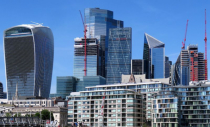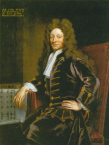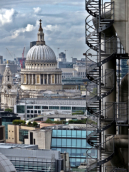





Docklands and the Thames,
Victoria Park to Paternoster
Square. Take a nostalgic
trip back to the East End in
the 1950’s or a stroll around
the Square Mile of the City
of London. It’s all here at
barryoneoff.co.uk
Copyright 2002 - 2024 ©Barry Carter. All rights reserved
THE GREAT FIRE OF LONDON 1666
Ashes to ashes
London has had many serious fires during the course of it's lifetime. The earliest of which we have definite knowledge occurred in 60 AD, during the revolt led by Queen Boudica, who completely destroyed Roman Londinium. This fire was so fierce that archaeologists still use the layer of ash left by the flames to date the strata below the city during excavation work. Another fire broke out in 675, destroying the Saxon cathedral, which was built of wood. It was rebuilt with stone around 675-685. In 1087, during the reign of William Rufus. Much of the Norman city including Saint Paul's Cathedral (there have been four) was destroyed. Many other fires have been recorded, the largest killing 3000 people in 1212, but none had caused so much devastation to the City as the 1666 fire although luckily there were few human casualties this time.The King’s Baker
It started on a windy Sunday night in a city ravaged by the plague, on September 2nd 1666. In the premises belonging to Thomas Faryner, the King's baker on Pudding Lane. One of the ovens is left burning. A small fire breaks out and spreads through the premises. The flames quickly reach the outside. Soon, aided by the wind, the whole building is blazing. Embers from the fire are caught by the strong breeze and deposited onto other buildings, which in turn caught fire. The buildings of the time were tightly packed. Every piece of available land had some structure on it and these structures had more structures added to gain space above the streets.. It was not long before the flames were spreading at an alarming rate. The danger had been seen years before and an order issued by the governing bodies of the city, that only stone structures be erected with slate to be used as roofing material. Due to the expense of these materials, the order had been largely ignored and the use of tar and timber was the usual thing. This of course, aided the fire, and in conjunction with the wind soon had the whole of the city ablaze.London razed to the
ground
It was to take four days to bring the blaze under control. This was eventually accomplished by demolishing buildings in it's path with explosives to stop the spread of the inferno. By this time it was too late. Only a few structures remained with as much as eighty per cent of the city just a pile of smoking ruins. Amazingly enough, according to some sources, there were no fatalities. Another source says that the death toll numbered eight. Which account is accurate I cannot say, but either way, it is miraculous that many hundreds were not killed by the blaze.

The Lord Mayor’s Woe
The Lord Mayor at the time was Sir Thomas Bludworth. When he was informed about the fire in it’s early stages he looked at it and is reputed to have remarked “Why, a maiden’s piss could put it out”. If indeed he did utter those words he couldn’t have been more mistaken about the size of the human bladder! The very next day he was found in a state of shock pacing endlessly up and down muttering to himself “What am I going to do, what am I going to do”?Samuel Pepys
Even the great diarist, Samuel Pepys, did not see any cause for alarm when his attention was drawn to the blaze. An excerpt from his entry for that day reads: “Some of our maids sitting up late last night to get things ready against our feast today, Jane called up about three in the morning, to tell us of a great fire they saw in the City. So I rose, and slipped on my nightgown and went to her window, and thought it to be on the back side of Mark Lane at the farthest; but, being unused to such fires as followed, I thought it far enough off, and so went to bed again, and to sleep.” Pepys had plenty more to write about the inferno in the days that followed. The London Gazette, a weekly newspaper of the time, also had much to report on the subject. The first two pages of this issue were devoted to the fire. London Gazette report >> Report by John Evelyn >>The after effects
The social and economic problems created by the disaster were overwhelming. Evacuation from London and resettlement elsewhere were strongly encouraged by Charles II, who feared a London rebellion amongst the dispossessed refugees. Despite numerous radical proposals London was reconstructed on essentially the same street plan used before the fire. This was mainly due to building and business owners starting to construct new premises on their old sites rather than wait for official decisions. Nobody was willing to wait. Twenty two 'Fire Judges' were appointed to settle land disputes amid the confusion but people were in a hurry and carried on building. This is why there were so many narrow winding streets in the city. Building after WWII changed the layout greatly and more modern construction works of the present day are gradually altering the old City plan.
Sir Christopher Wren
Sir Christopher Wren was not originally an architect. He was a scientist, mathematician, inventor and founder member of the Royal Society. While in his early thirties he had taken an interest in the design and construction of buildings and thought he would like to try his hand. He put his mathematical knowledge to good use when making his architectural designs. Due to having the advantage of having an uncle in a position of high authority he was able to get his name put forward for the designing of several buildings outside London. These including the Sheldonian Theatre in Oxford and the Pembroke College Chapel, Cambridge. This put him in good stead when other contracts were being handed out. He, with much input from Robert Hooke, designed the Monument to the great fire, which can still be seen on Fish Street Hill in the City. It measures 202 feet high. This is also the distance from where it stands, to where the fire started. His first design was to have had a statue of the King atop of it. Not wishing to be remembered along with the disaster, the King had this changed and the golden flames were used instead, as you can still see today.Rebuilding the City
Eighty percent of the City was ravaged by the fire. Immediate action was needed to get rebuilding under way, a massive task. Within days of the fire Christopher Wren (and others), had submitted designs to the King for the complete rebuilding of the city. The drawings showed a uniform geometric layout with wide straight main streets and the smaller streets branching off at right angles with square blocks of buildings. This plan could have been based on the layout of Paris. Wren's only trip abroad in 1665 took him there. The expense, if this plan had been put into operation, would have been enormous, and it was duly refused. Instead, Wren got the go ahead to work on plans for the churches. eighty nine of these had been destroyed in the fire, and most of the ones we see standing today were built to the designs of Sir Christopher Wren’s office. His most famous ecclesiastical landmark being Saint Paul’s Cathedral, with it's huge unsupported dome. London’s Burning, London’s Burning, fetch the engines, fetch the engines, Fire fire, Fire Fire, Pour on water, pour on water. Old nursery rhyme




















